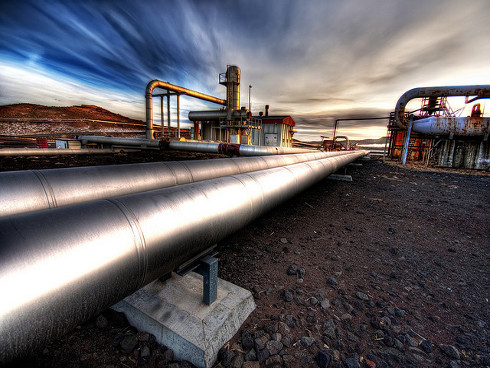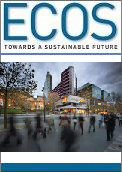
|
Published: 3 October 2011
Geothermal desalination under investigation
Sustainable energy is being put on trial to power Multi-Effect-Distillation (MED) - a form of desalination that is not commonly used.

|
|
Waste heat from geothermal operations is being considered in MED trials. Credit:
Flickr: Trey Ratcliff
|
MED is capable of running on low-grade heat from 65–90°C, which gives potential for the use of renewable energies like by-product heat from industrial production or mining processes (waste heat) and geothermal energy.
The National Centre of Excellence in Desalination (NCED) and the West Australian Geothermal Centre of Excellence (WAGCoE) are working with a PhD student on a new design that could see MED production yields using low-grade heat improve by 30 per cent.
Supported with scholarships from UWA and NCED, PhD student Alexander Christ will see the design trialled at the NCED’s desalination research facility in Rockingham.
‘Most desalination techniques are highly intensive so they require a lot of energy –they require mechanical energy,’ Mr Christ says.
‘With the MED process we can utilise heat direct without any transformation losses and we’re improving it exactly for the means of using low-grade heat.’
A pilot plant with a fresh water production of one cubic metre a day will be tested with different temperatures, water sources, manufacturing materials, and processing conditions.
In MED, thermal energy from an initial heat source is used to evaporate saline water in a heat exchanger.
The purified water vapour is condensed in another heat exchanger; evaporating the next chamber’s water again under lower pressure and temperature and utilising the released condensation energy.
Depending on the process conditions these steps can be repeated several times.
The new design aims to utilise a broader band of this low-grade energy to get maximum purified water yield.
MED is not sensitive to contaminants like in reverse osmosis, making it ideal for purifying waste water, contaminated water and ground water.
While MED is not a new technology, Mr Christ says it can be used to harness geothermal and waste heat energy which is readily available.
‘We have a sustainable, emission-free, environmentally friendly way to supply fresh water,’ he says.
Mr Christ says MED and other applications for waste heat reuse are not utilised more because there is a lack of necessity in the industry.
‘Water is still cheap, if energy costs go up more we may see a shift to this [technology].’
‘MED is costly to set up but has relatively low running costs once it’s established and would use recycled low-grade heat energy.’
Mr Christ says this type of technology is receiving interest from industry and could be commercially viable in the near future.
Source: Science Network WA, Renee Sizer



